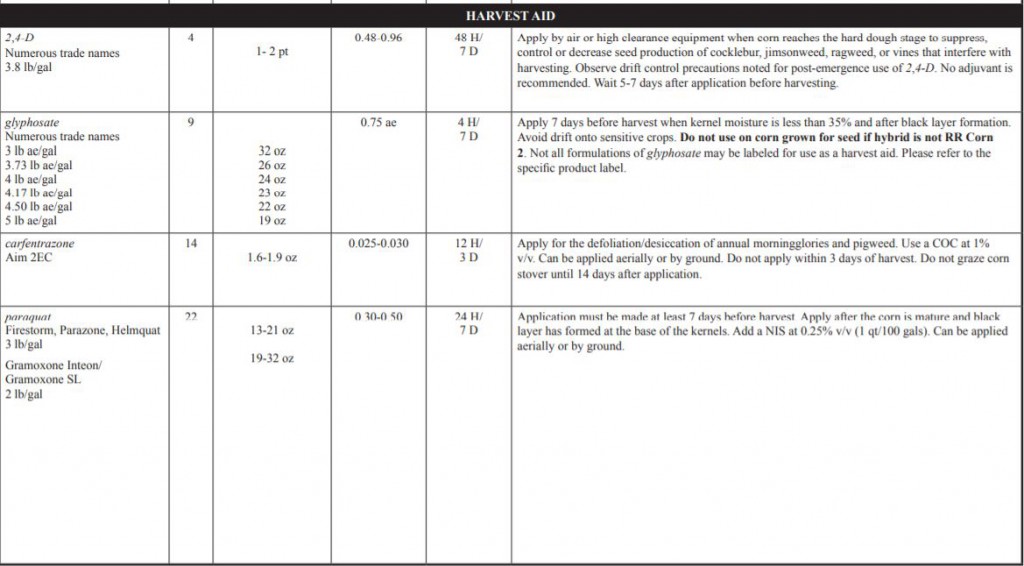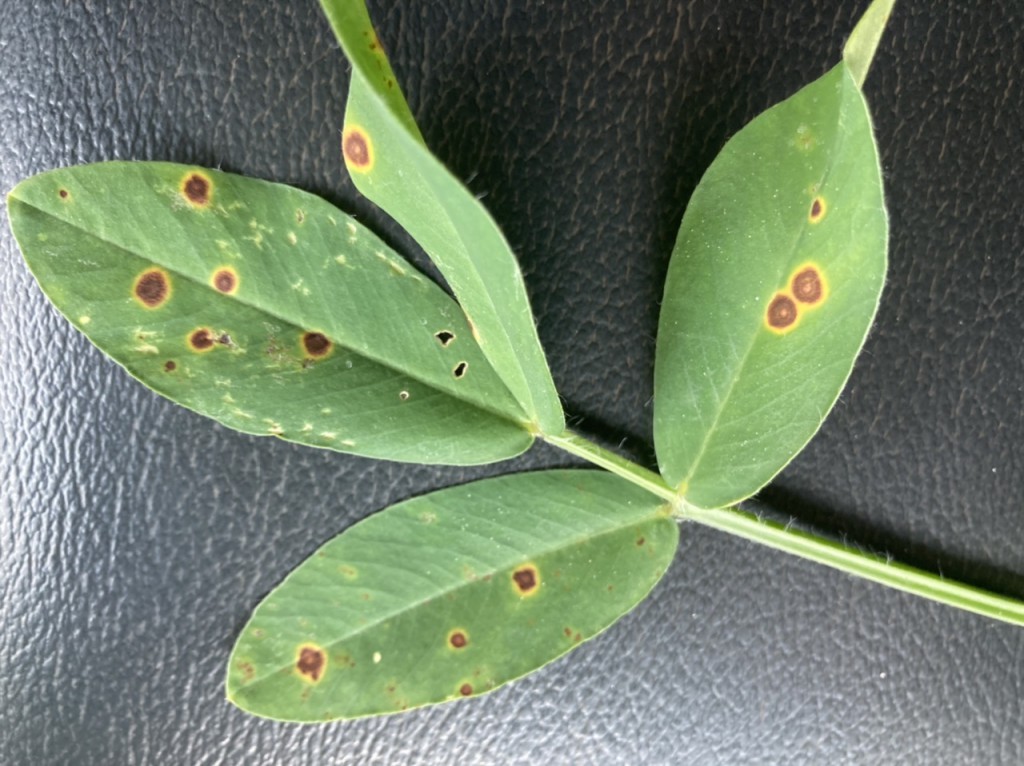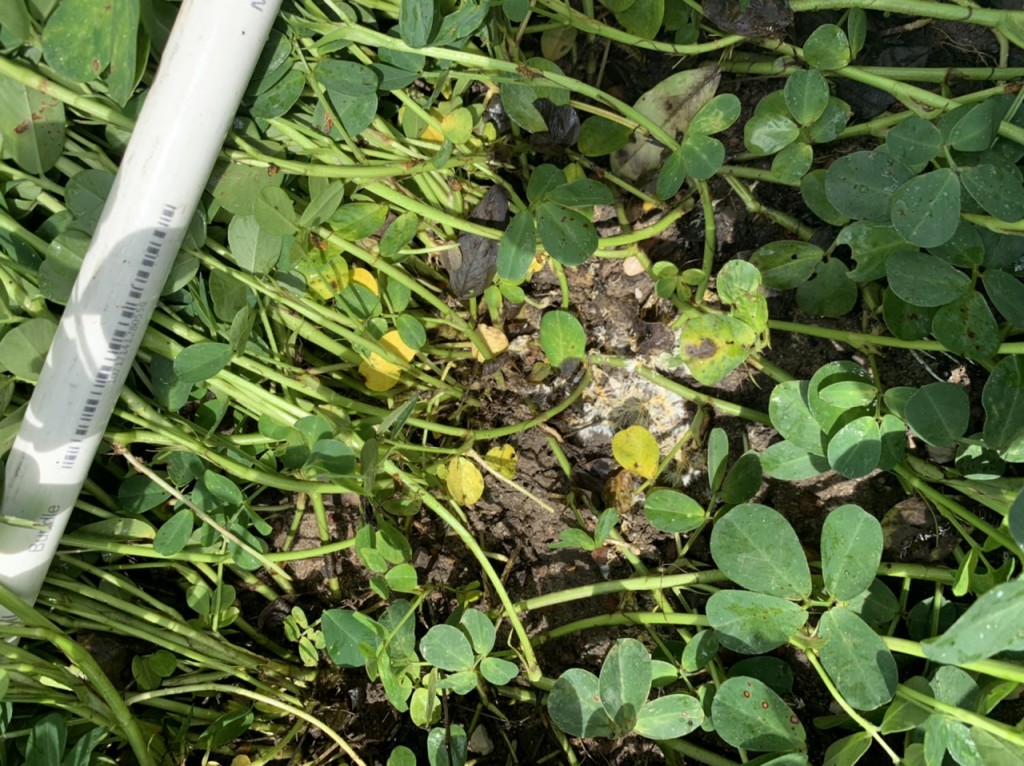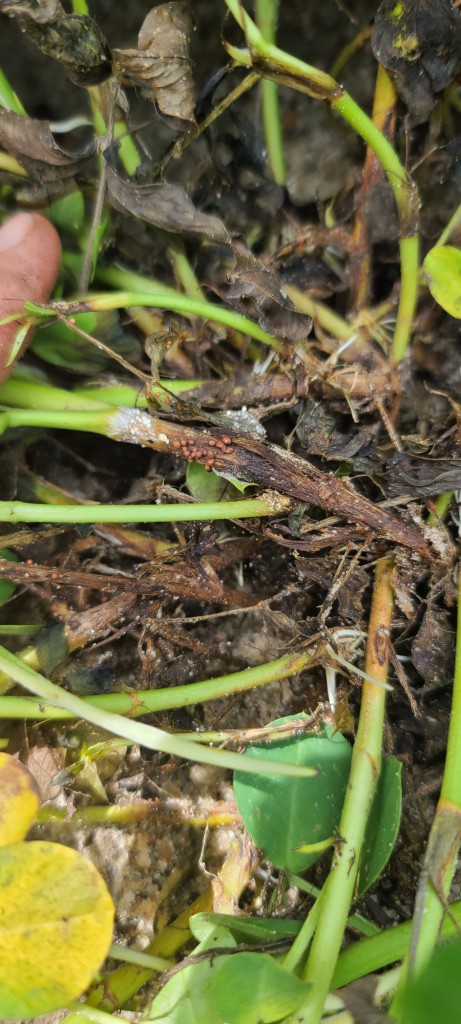Rain, rain , rain.. The table below shows the rainfall totals at the Sunbelt Ag Expo recorded by the UGA Weather Station from July 1 to July 22. This location has accumulated 11.27 inches of rainfall and it has rained 16 out of the last 22 days.

Rain Delays and Weed Control (Prostko)
Recent rains over the last few days at the UGA Ponder Farm (1.75″+) have kept me out of the field for today so I thought it would be a good time to squeeze in a quick blog. The frequent rain showers we have had over the last month or so have caused many problems with growers who have not been able to get in the field to make pesticide applications. Since its now July 20 and getting late for just about everything, here are a few things to think about in regards to weed control in various crops:
1) The application cut-off date for all dicamba applications in tolerant soybean was June 30 and is July 30 for tolerant cotton.
2) If at all possible, growers need to avoid making applications of Cobra or Ultra Blazer to peanuts during the 60-80 DAP time frame. There have been yield losses (5-10%) associated with the application of these herbicides during this period (usually R5-R6 or beginning to full seed stage). Cobra can legally be applied up until ~100-105 DAP since it has a 45 day PHI. The PHI for Ultra Blazer is 75 days.
3) Yes, it is my opinion that it always a better idea to apply a POST grass herbicide at least 3 days before a peanut fungicide application rather than tank-mixing them together. However, growers in a tight bind who just have no other choice but to co-apply (fungicide + POST grass herbicide) should consider increasing the rate of the grass herbicide (5-10%) to help overcome potential antagonism. They must also realize that they still might not get optimum control especially since grasses are likely larger than desired. Growers will be wasting money on the grass herbicide if applied to large plants. Generally, flowering grasses are way too big to control with these herbicides. The POST grass herbicides (Select, Fusilade, Poast) have a 40 day PHI. Check out page 234 of the 2021 UGA Pest Control Handbook for more information about grass control in peanut:

4) 2,4-DB has a 60 day PHI so legally it can be applied up until ~80-90 DAP (for most peanut cultivars). There are at least 8 different formulations of 2,4-DB out there and these labels can vary slightly. Late applications of 2,4-DB can be tank-mixed with most fungicides. Don’t expect any home-runs here since 2,4-DB is not very effective on most weeds that are growing above the peanut canopy (except common cocklebur).
5) Since field corn harvest is rapidly approaching, I have gotten a few questions about the pre-harvest control of annual morningglories. My usual recommendation is to apply a combination of Roundup + Aim within 3 days of harvest. This treatment will not miraculously remove the running morningglory plants, but it will desiccate them enough to facilitate harvesting (i.e. makes the vines more brittle and less likely to wrap). See below for more specifics (from 2021 UGA Pest Control Handbook, page 73).

What about side-dress nitrogen on cotton? Regarding timing, we know that the typical time for side-dressing N is from 1st square to 1st bloom, if cotton in this scenario is drying out and starting to grow, it may not hurt to start a little early or at least be on the early end. If the cotton has already reached 1st square, go as soon as possible. If cotton is already blooming, again go as soon as possible. With regards to rates, it may be more appropriate to go with a lower rate than normal for a couple of reasons. Reducing the amount of nitrogen may help with proper growth and development of this “late” crop. Too much nitrogen may cause too much vegetative growth that may not in turn relate to more cotton yield because of the reduced amount of time to mature. Also, if reduced rates are used up front, then there is still an opportunity to come back with some through a pivot or foliar later on.
Peanuts: Seems like rains will become less frequent in the coming days and temperatures will increase. Higher temperatures, higher humidity, and intermittent rains will be a near-perfect situation for rapid development of white mold in peanuts. Leaf spot is already burning in the fields so growers need to be aggressive in their management programs, especially if they have gotten behind. Below is an example of leaf spot from Dr. Bob Kemerait. Note silver-gray spores on TOP for this pic of Early Leaf Spot.

Below is a picture showing a classic example of chemical burn and NOT leaf spot on peanut.

This week I took this picture of “false white mold” of peanut (Phanerochaete fungus). Looks dangerous, especially early on, but is harmless. Note yellowing as it ages.

Below is an example of “real” white mold/stem rot (Sclerotium rolfsii). This picture was sent to Dr. Bob this week from Wilcox County.

Stinkbugs in Cotton.. I have been getting a question or two about stinkbugs in cotton. The boll injury threshold should be adjusted up or down based on the number of susceptible bolls present. Use a 10-15% boll injury threshold during weeks 3-5 of bloom (numerous susceptible bolls present), 20% during weeks 2 and 6 of bloom, and 30%(+) during weeks 7+ of bloom (fewer susceptible bolls present). Detection of 1 stink bug/6 row feet would also justify treatment.
Higher stink bug populations are typically observed on late-planted cotton compared with early-planted cotton.
A dynamic threshold which varies by the number of stink bug susceptible bolls present is recommended for determining when insecticide applications should be applied for boll feeding bugs. This threshold is shown below.
| Week of bloom | Stink Bug Threshold (% Damage) |
| 1 | Retention |
| 2 | 20 |
| 3 | 10-15 |
| 4 | 10-15 |
| 5 | 10-15 |
| 6 | 20 |
| 7+ | 30+ |

Thank you for your time, please contact your local extension agent with questions or concerns.
Thank You,
Jeremy Kichler
Colquitt County Extension Coordinator
